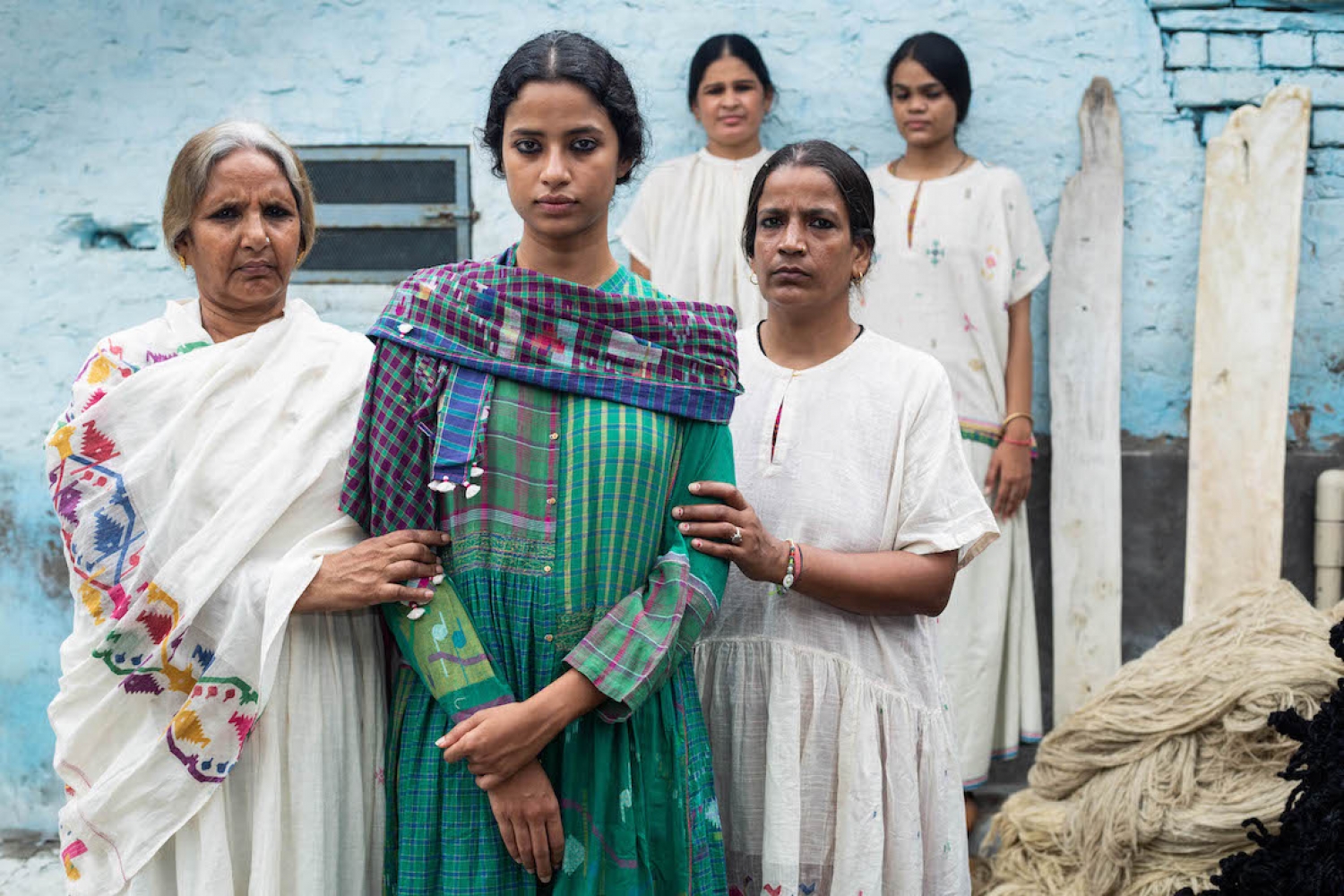

‘Taan’ not only means tautness, which is critical to the weaving traditions of India, but in the lexicon of Indian classical music, it also refers to the rapid melodic vocal technique employed when singing a raga. Meanwhile, ‘baan’ in Hindi is a synonym for thread, a bow and also another word for weft. A derivation of ‘baan’ is ‘bani’, which also means language. Together, Taan Baan, for Injiri is all of the above – the unyielding strength of the yarn on the loom, as well as the language of the loom; a song that is set to the rhythm of weaving, the music produced by the weaver to create his wonders. With this collection, Injiri’s founder and designer, Chinar Farooqui, strives to make a connection between Indian classical music and traditional Indian textiles.
Injiri’s Taan Baan collection celebrates the living traditions of weaving in our country. Over the past 11 years, the brand has been working with various handloom weaving clusters all over the country and it can be challenging to create something more beautiful with the same technique year after year. Having said that, Chinar strongly believes that it is vital to work with the same weavers for the sake of continuity and to continue to build and foster strong interdependent relationships with them and the Taan Baan collection pays homage to the idea of the handloom and all of its possibilities.
Created with organic cotton, mixing traditional Indian ‘extra-weft’ techniques from Bhujodi in Gujarat and Jamdani of West Bengal, along with Madras checks and with extensive clamp dying, Injiri’s Taan Baan collection is a festive collection that welcomes Spring and celebrates Summer with its glorious hues of greens, pinks, yellows and whites.
The ‘extra-weft’ technique of Jamdani is a discontinuous one, where each individual motif is created by interlacing independent 'extra' or separate weft threads into the warp apart from the main weft. Meanwhile, in the Bhujodi extra-weft technique, the continuous one is called Pachedi and the discontinuous one is called Buta. It is a tedious process, where the motif is crafted by carefully picking up threads and adding extra weft by hand. Both of these techniques are extensively explored in Injiri’s Taan Baan collection and they play an important role in some of the key silhouettes that the brand works with season after season.
Clamp dyeing by the Khatri weavers of Bhuj has been employed in the collection to achieve large colour blocking. Resist dyeing with clamps or wooden blocks is an age-old technique used to create resist-dyed surfaces. Paintings have often been the source of vision for Injiri whilst designing surfaces and the paintings of artist, Mark Rothko served as the inspiration for the brand’s Taan Baan collection.
Also, Madras checks – something that the word Injiri itself stands for – woven in khadi weft in a variety of colours, have been explored in the collection.The silhouettes used in the collection are based on traditional Indian garment construction techniques. The styles are cut in a way that wastage of fabric is minimum. Every part of the fabric is used up in the way it is shaped by using kalis, and panels. Silhouettes are also relaxed, easy to wear and extremely comfortable. Injiri uses a technique called tagai, in which the fabric is gathered and quilted to form yokes and sometimes, the bodices of the garment. The tagai designs are inspired by the poncha or end finishing of the salwar or lower garment.
Date 24-02-2022